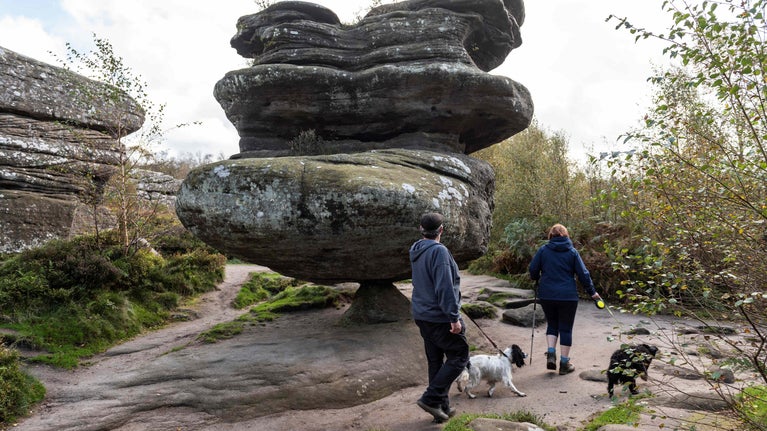
Discover more at Brimham Rocks
Find out how to get to Brimham Rocks, where to park, the things to see and do and more.

From rocks to moorland, Brimham offers a whole host of different features for visitors, as well as being a unique habitat to varied plants and animals. Here are a few highlights and what not to miss on your first, second or thousandth visit.
The rocks and paths can become slippery when wet. Always keep a close eye on children, there are sudden drops and steep slopes across the site. If you need assistance, please call the emergency services (999) and ask for mountain rescue.
The heather moorland at Brimham Rocks is a unique habitat, home to a variety of plants and offers shelter to numerous insects and ground nesting birds. Discover what you may come across on a stroll across the moor.
Heather moorland is internationally important because it is rare worldwide and is mostly found in northern Britain. Moorland is a patchwork of dwarf shrubs such as heather and bilberry. It is an open landscape into which we don’t want to introduce shade and must remove trees.
Moorland is a semi-natural habitat created by the removal of woodland by humans thousands of years ago.
Although the titular rocks are the reason many visit, Brimham Rocks also features a beautiful area of heather moorland. It is classified as a Site of Special Scientific Interest (SSSI) due to its globally significant plant life. Three types of heather make up the moorland at Brimham Rocks:
This was known as Brimham House, a late-18th-century building constructed for ‘the accommodation of strangers’. Currently it houses a photographic exhibition about the social and geological history of Brimham along with a short video showing how the ranger team manages the moorland.
Brimham bonus: Check out the area behind Brimham House. It’s often missed by visitors and some of the best rocks can be found there.

Find out how to get to Brimham Rocks, where to park, the things to see and do and more.

There are plenty of ways to explore Brimham Rocks, from walking and cycling, to orienteering and geocaching. Discover the outdoor activities on offer.

Discover the millions of years of natural history evident at Brimham Rocks, which has been enchanting visitors for centuries.

Join one of our volunteer guides to discover more about this weird and wonderful place.

Discover Brimham's history, from the last ice age that helped form the rocks, to the stories of the people who lived here.